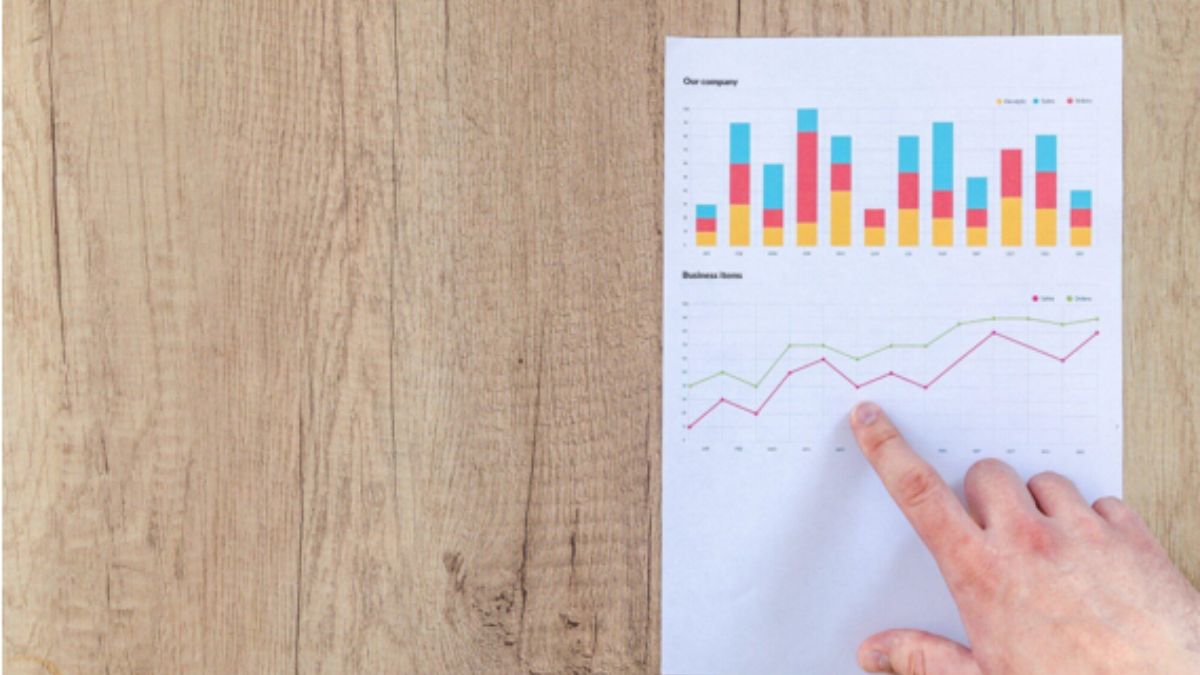BUSINESS
Things Every Business Owner Needs To Know About Google Reviews

Do you know what major users do when they are looking for a hotel, bank, fashion store, restaurant, etc.? They Google.
Google lists these businesses one by one, ranking them first to last based on their reviews and ratings, SEO, visibility, customer preferences, etc. It is also known that 93% of users look for reviews before visiting a business.
This means it is critically acclaimed that having positive and good Google reviews can generate more sales and revenue for businesses. Shout-out to business owners: Now, the task is easier, as you can simply buy Google reviews and leverage them for growth.
But there is more to it. Explore this blog to learn everything about Google reviews and how they can benefit your business.
What Are Google Reviews And How Does It Influence Customers?
Many wonder what Google reviews are; instead of recommending a business in person, users now write feedback, comments, and ratings for businesses on Google Profiles.
Google reviews are accessible from anybody to everybody and give the right to genuinely review and rate a business as per their services without biases. This means Google reviews enhance trust, credibility, and authenticity in the eyes of other users.
When readers read all kinds of reviews, from negative to positive, and see how healthy businesses have managed and responded to them, they are influenced to take action, for example; purchasing a product or availing of a service, purely because of recommendations made by a stranger on Google reviews.
Where Do All Your Business Reviews Show Up On Google?
Where can users view business reviews on your profile recommended by fellow users? See below:
-
Google Knowledge Panel
When customers search for your company name, Google will present a digital business card on the right side of their screen. The Google Knowledge Panel retrieves data from your Google Business profile, such as your company’s address, phone number, website, and reviews.
-
Google Local Search Result
Customers searching for something like “cafe near me” on Google typically receive local search results, including a map. This “map pack” also consults Google company profiles. It returns results based on the search term’s relevance, the searcher’s vicinity, Google star ratings, and other criteria.
-
Google Maps Search
Some consumers look for businesses by visiting the Google Maps website or app. The site also displays information about client reviews and results from Google Business profiles.
Why Do Google Reviews Matter For Any Business?
How do you think a business or brand is developed to be known by their names? Through all the efforts, marketing and, yes reviews play a significant role; let’s see below:
-
Upscales Local SEO Rankings
Getting more positive Google reviews improves your online visibility and credibility. This will upscale your local SEO ranking so prospective customers can find you easily.
-
Improves Brand Recognition
Positive feedback increases the number of customers using your products or services. It improves your brand image as many people start recognizing and recommending it to others.
-
Boosts Sales
75% of customers research businesses online by reading reviews. Ensure you regularly find a way to get more reviews for your business. So more people can observe your online presence and consider you for the business.
-
Reduces Other Marketing Costs
75% of customers look up local companies online before making a purchase. Merely 3% of customers assert that they never peruse online reviews. This means focusing on this tool can reduce other marketing costs. You use it to promote your business worldwide.
-
Increase Customer Feedback Loop
Customer feedback does more than just bring in more revenue. It assists you in attracting new customers and learning how to improve your company.
How To Get More Google Reviews On Your GMB Profile?
Since now you know the significance of Google reviews, let’s understand how to more reviews for your business:
-
Excellent Customer Service
The best way to get more Google reviews is to offer outstanding services to your clients and then gently ask for reviews from satisfied customers.
-
Make The Review Process Simple
When you simplify the writing of Google reviews, the number of feedback increases. Customers only need to click the link to reach your Google review page.
-
Present Testimonials On The Website
Showcase your positive testimonials on your websites to inspire your existing customers to write about their experiences.
-
Give Offline Review Cards
During customer visits to your business; you can offer them your review card. That card must contain information about your company along with a QR code.
-
Ask Directly For A Review
If you or your staff regularly interact with your customers, ask them directly for reviews. As customers meet you regularly, it develops bonds between you.
-
Use Different Mediums To Ask
There are different mediums available to ask for reviews. For example, you can send them an SMS after their purchase to find out their experience or write the mail exclusively to ask for reviews.
-
Plan Feedback Campaign
You can also arrange a feedback campaign in which you offer giveaways or discount coupons. When customers write reviews for a business, they can take advantage of these offers.
-
Use A Personalized Yet Professional Tone
When you share a bond, you can use a personalized yet polite tone to ask them to give your business reviews. It also impresses customers that you want their opinion.
-
Leverage Social Media
Who knows the power of social media? Most of your customers see your profile on social media along with it. If they see your reviews, it will impress prospective buyers.
Conclusion: Elevate Your Business With Google Reviews
Leverage Google reviews now to see a progressive clientele for businesses. Increase online visibility and SEO ranking, grow locally, and build immense trust in the eyes of your target audience.
You can also get help from the expert team of Buyreviewz who can help boost your Google business reviews and maximize sales and revenue.
BUSINESS
Jeep Wrangler: Off-Road Capability and Towing Tips

The Jeep Wrangler has long stood as an icon of rugged freedom, off-road adventure, and American ingenuity. With its unmistakable design and trail-tested durability, the Wrangler appeals to off-road enthusiasts, overlanders, and everyday drivers alike. But beyond its rock-crawling prowess, the Wrangler also offers respectable towing capacity and versatility for hauling gear, trailers, or boats.
In this guide, we’ll explore the Jeep Wrangler’s off-road capabilities, delve into towing tips, and provide key advice for making the most of this legendary 4×4 vehicle.
The Jeep Wrangler Legacy: Built for Adventure
From its roots as a military vehicle during World War II, the Jeep Wrangler has evolved into a lifestyle symbol for those who crave freedom and off-grid exploration. Its boxy shape, removable doors, fold-down windshield, and robust drivetrain contribute to a unique driving experience that’s tailor-made for off-road challenges.
Modern versions like the Jeep Wrangler JL and Wrangler Rubicon integrate cutting-edge technology with heritage design, enhancing both on-road comfort and trail-rated performance.
Off-Road Capabilities of the Jeep Wrangler
The Wrangler’s off-road prowess is more than just marketing—it’s engineered for real-world conditions. Here are the key features that make it one of the best off-road SUVs on the market:
1. 4×4 Drivetrain Systems
The Jeep Wrangler offers two primary 4×4 systems:
-
Command-Trac® 4×4: Great for everyday off-road and light to moderate trails.
-
Rock-Trac® 4×4: Standard on the Rubicon, designed for serious rock crawling and steep terrain.
These systems allow drivers to switch between 2WD and 4WD, with low-range gearing for extreme conditions.
2. High Ground Clearance
With up to 10.8 inches of ground clearance, the Wrangler can easily traverse rocks, ruts, and deep snow. Optional 33-inch or 35-inch tires improve approach and departure angles, allowing for safer and smoother climbs or descents.
3. Solid Axles and Suspension Travel
The use of Dana® 44 heavy-duty axles, paired with a coil-spring suspension, ensures better articulation and wheel travel. This setup allows the Wrangler to maintain traction even when a tire lifts off the ground.
4. Skid Plates and Tow Hooks
Factory-installed skid plates protect the undercarriage from rocks and debris, while front and rear tow hooks come in handy during recovery situations. These are essential for serious off-roading.
5. Water Fording and Trail Rated® Badge
With a water fording depth of up to 30 inches, the Wrangler can handle stream crossings with ease. The Trail Rated® badge on select trims indicates testing in five key off-road areas: traction, water fording, maneuverability, articulation, and ground clearance.
Towing Capacity of the Jeep Wrangler
While not traditionally known as a heavy hauler, the Jeep Wrangler’s towing capacity has improved over the years. Towing requirements depend on the trim level, engine type, and equipment.
Towing Capacities by Model:
| Wrangler Model | Max Towing Capacity |
|---|---|
| 2-Door Wrangler | 2,000 lbs |
| 4-Door Wrangler Unlimited | 3,500 lbs |
| Wrangler 4xe (Plug-In Hybrid) | 3,500 lbs |
| Wrangler Rubicon 392 (V8) | 3,500 lbs |
Note: Always consult the owner’s manual and ensure your Wrangler is properly equipped with the towing package.
Best Engines for Towing
Several powertrain options are available, and each impacts towing performance:
-
3.6L Pentastar® V6 (285 hp): A solid all-around performer with good towing capability.
-
2.0L Turbocharged I4 (270 hp): Provides more torque than the V6 and handles moderate towing with efficiency.
-
3.0L EcoDiesel V6 (260 hp, 442 lb-ft torque): Excellent for those who need low-end grunt for heavier loads.
-
6.4L HEMI® V8 (470 hp): Found in the Rubicon 392, this is more about performance but handles towing with ease.
Towing Tips for Jeep Wrangler Owners
Whether you’re towing a jet ski, small camper, or utility trailer, it’s crucial to tow safely and efficiently with your Jeep Wrangler. Follow these essential tips:
1. Use the Right Hitch and Equipment
Invest in a Class II or III hitch receiver, depending on your Wrangler model and load. Ensure your ball mount matches the trailer coupler and weight requirements. Use trailer safety chains and a trailer brake controller if required.
2. Balance the Load
Distribute weight evenly across the trailer. Keep 60% of the weight in the front half of the trailer and avoid overloading one side. Proper tongue weight (10–15% of trailer weight) ensures better control and reduces sway.
3. Check Tire Pressure and Suspension
Before towing, check tire pressures on both the Jeep and trailer. Properly inflated tires improve handling and fuel economy. Also, consider air springs or load-leveling suspension upgrades for frequent towing.
4. Adjust Driving Habits
Towing changes how your Wrangler handles. Allow for longer braking distances, make wider turns, and reduce speed on steep inclines or descents. Always use lower gears when descending hills.
5. Monitor Transmission Temperature
If your Wrangler is towing close to its limit, especially in hot weather or on long climbs, use a transmission cooler or monitor temps using onboard diagnostics or a gauge.
Off-Roading with a Trailer: Can the Wrangler Handle It?
Absolutely—but with limitations.
If you’re planning to venture off-road while towing, stick to graded dirt roads or mild trails. Heavy off-roading with a trailer is not recommended unless you have:
-
A rugged off-road trailer with articulating hitch
-
Trailer brakes and all-terrain tires
-
Recovery gear and proper trail training
Overlanding setups, where you tow a compact expedition trailer or rooftop tent, are becoming more popular with Wrangler owners. These setups offer a great balance between off-grid living and mobility.
Upgrades to Enhance Towing and Off-Road Performance
If you’re serious about maximizing your Wrangler’s potential, consider these aftermarket upgrades:
-
Heavy-duty bumpers with tow points
-
Winch systems for self-recovery
-
Locking differentials and gear upgrades
-
Auxiliary lights and off-road tires
-
Upgraded cooling system or tow mirrors
Always verify that modifications comply with local laws and don’t exceed GVWR (Gross Vehicle Weight Rating).
Final Thoughts
The Jeep Wrangler continues to deliver on its promise as the ultimate off-road vehicle, but it’s also surprisingly capable when it comes to towing. Whether you’re pulling a small trailer to a campsite or crawling up a rocky slope, the Wrangler offers a blend of freedom, durability, and versatility unmatched by most SUVs.
BUSINESS
How to Leverage Visual Data to Enhance Office Presentations

Have you ever sat through an office presentation where the slides were full of text and hard to follow? Many people find it challenging to absorb information when it’s only presented in words.
This is where visual data comes in! By using charts, graphs, and images, you can make your presentation much more engaging and easier to understand.
Visuals can help convey complex ideas simply and quickly, making your message clearer and more impactful.
The Power of Visual Data
Visual data, like charts and graphs, can transform how you present information. People remember visuals better than text. This is important to remember when you want to make an impression during an office presentation.
Imagine explaining sales figures with a simple graph instead of a long paragraph filled with numbers. Your audience can quickly see trends, making it easier to grasp your message.
And when they understand better, it boosts your confidence! You’ll feel more assured as you present, knowing that your audience is on the same page.
Types of Visuals to Consider
When it comes to visual data for office presentations, several types can be quite effective. Here are some options to consider:
Charts and Graphs
Charts and graphs are your best friends when it comes to presenting data. A pie chart can show how parts make up a whole, while a line graph can illustrate trends over time. Both types of visuals are great for demonstrating relationships between different pieces of information.
For instance, if you want to share quarterly sales results, a bar graph can showcase each quarter side-by-side, allowing your audience to easily compare them. This helps them engage with the data quickly.
Images and Diagrams
Images can also enhance your office presentations by providing visuals that reinforce your message. A well-placed image can help your audience relate to the material, making it more memorable. For instance, if discussing teamwork, an image illustrating people collaborating can bring your point to life.
Diagrams can help illustrate processes or concepts that may be difficult to explain with words alone. A flowchart can clarify steps in a process, making it easier for your audience to follow along.
Designing Effective Visuals
Getting the visuals right is crucial for making your office presentations truly effective. Here are some tips for designing visuals that can enhance your presentations:
Keep It Simple
One of the biggest mistakes when using visual data is clutter. Avoid cramming too much information into a single slide.
Instead, focus on one key idea at a time. This helps your audience concentrate on what you are saying without getting overwhelmed.
Using white space strategically can make your slides easier to read and visually pleasing. This makes it easier to follow your presentation and helps maintain attention.
Choose the Right Colors
Colors can greatly affect how your visuals are perceived. Choose a color scheme that is both pleasing to the eye and appropriate for the content. For professional presentations, stick to neutral colors with accents that draw attention to key points.
A good guideline is to use contrasting colors for text and backgrounds to ensure readability. Avoid using too many colors that could distract or confuse your audience.
Engaging Your Audience with Visual Data
Once you have your visual data ready, it’s time to use it to engage your audience. Here are some effective strategies:
Interactive Elements
Adding interactive elements to your presentation can boost engagement significantly. For example, instead of just showing a slide with information, consider using software that allows your audience to interact with visual data.
For instance, if you’re showing a dataset, you could invite your audience to help analyze it. This makes the presentation feel more collaborative and less like a lecture.
Tell a Story
Everyone loves a good story, and integrating storytelling into your presentations can make your visual data even more compelling. Start with a problem or situation, show how the data relates to that problem, and then present your solution while utilizing visual aids.
This approach not only grabs attention but also helps your audience connect emotionally with the content. They will remember your story long after the presentation ends.
Use Comparisons to Spark Curiosity
Highlighting changes over time or differences between categories can spark curiosity. Side-by-side charts or before-and-after visuals quickly show impact and evolution. This invites your audience to ask why things changed, keeping them mentally engaged and more likely to participate in discussions or ask questions.
Incorporate Visual Variety
Avoid using the same type of chart repeatedly. Mixing in different formats-such as line graphs, heat maps, scatter plots, or timelines-can help maintain attention and prevent visual fatigue. It also allows different insights to stand out more effectively. Just be sure each visual serves a purpose and supports your main message.
Practicing Your Presentation Skills
Once you’ve created your visuals and planned your presentation, practice is key to success. Rehearse several times to ensure you feel comfortable with the material. This will also help you identify any areas where you might stumble or lose your audience’s interest.
As you practice, pay attention to how you incorporate your visual data. Make sure you are pointing out key elements on the visuals at the appropriate times in your speech. This will help reinforce your message and keep your audience engaged.
Building Your Own Chart
If you want to make your presentations even more effective, you should consider building your own chart tailored to your specific message. Many software tools allow you to create customized visuals that can clearly convey what you want to communicate.
By building your own charts, you can ensure they fit perfectly with the narrative you are trying to present. This customization can make a significant difference in delivering a strong, impactful message to your audience.
By boosting your presentation skills with visual data, you not only help your audience but also build your confidence as a speaker. Take the time to prepare and practice, and you will surely see improvement in how your presentations are received.
Elevate Your Presentations with Visual Data
In today’s fast-paced business environment, making an impact during office presentations is essential. Leveraging visual data can greatly enhance your ability to communicate your ideas effectively. Remember to use clear, simple designs that engage your audience, and don’t hesitate to make your visuals interactive.
So, take action today and start using visual data to make your office presentations stand out!
You can find more useful and interesting articles on our website. Be sure to visit us and read more.
BUSINESS
Innovative Coaching Techniques for Community Leaders

Want to help your community leaders grow and lead better? Coaching can make a big difference. New and creative methods are changing the way leaders learn.
These techniques build skills, boost confidence, and inspire action. This guide will show you easy ways to coach with impact.
Keep reading to help your leaders shine and succeed.
Build Trust First
Trust is the base of every strong coaching relationship. Community leaders need to feel safe and respected. Start by showing honesty and care in every talk. Listen without judging or rushing. Be open about your role and goals. Keep all shared information private.
Follow through on what you promise. Small actions can build big trust. Use kind words and a calm tone. Make time to really get to know the leader. Trust helps leaders open up and grow faster.
Ask Powerful Questions
Good questions help leaders think deeply. They guide the leader to find their own answers. Use open-ended questions that start with “what” or “how.” Avoid yes or no questions when possible. Let the leader take time to respond. Don’t rush the process.
Powerful questions can spark new ideas. They help leaders see challenges in a new way. Ask questions that focus on goals and values. Keep your tone calm and curious. The right question can lead to real change.
Use Active Listening
Active listening shows you care about what the leader says. It means paying full attention without interrupting. Use body language like nodding to show you are engaged. Repeat or rephrase what you hear to confirm understanding. Ask follow-up questions to dig deeper.
Avoid thinking about your response while the leader talks. Focus on their feelings and words. This helps build trust and connection. Leaders feel valued when they are truly heard. Listening well uncovers important insights. It also encourages honest sharing. Good listening is a key coaching skill.
Create Action Plans
Action plans help leaders turn ideas into steps. They break big goals into smaller, clear tasks. Each step should have a deadline. This keeps leaders focused and on track. Include what resources or support they need. Write down the plan so it is easy to follow.
Review the plan regularly to see progress. Adjust steps if something is not working. Encourage leaders to take responsibility for their actions. Celebrate small wins along the way. Action plans make leadership growth real and doable. They turn coaching into results.
Reflect and Improve
Reflection is important for leaders to grow and improve. After each coaching session, take time to think about what went well. Also, consider what could be done differently next time. Honest reflection helps leaders understand their strengths and weaknesses.
Coaches can help by asking thoughtful questions. Writing down your thoughts can make learning clearer. Feedback from others is useful too. This process helps leaders make better decisions. It shows where changes are needed. Small improvements add up over time. Learn more here about business coaching and keep practicing reflection regularly.
Explore Coaching Techniques for Community Leaders
Community leaders play a big role in making change. Good coaching helps them grow strong and confident. Simple techniques can make a big difference.
With the right support, leaders can inspire their teams. Investing in leaders means a better community for all.
Looking for more tips and ideas? We’ve got you covered. Check out some of our other posts now.
-

 HEALTH1 year ago
HEALTH1 year agoIntegrating Semaglutide into Your Weight Loss Plan: A Practical Guide
-

 HOME IMPROVEMENT1 year ago
HOME IMPROVEMENT1 year agoHow to Choose the Perfect Neutral Area Rug for Every Room
-

 LAW1 year ago
LAW1 year agoPost-Divorce Considerations in California: Modifications and Long-Term Planning
-

 LAW1 year ago
LAW1 year agoTeenage Drivers and Car Accidents in California: Risks and Parental Liability
-

 CONSTRUCTION1 year ago
CONSTRUCTION1 year agoConstruction Site Safety Regulations in New York and Your Rights as a Worker
-

 FINANCE1 year ago
FINANCE1 year agoDigital Asset Management in Florida Estate Planning
-

 LAW1 year ago
LAW1 year agoKentucky’s School Football: Concussions, Injuries, and Legal Options
-

 LAW1 year ago
LAW1 year agoGang Activity and Criminal Charges in CA: Protecting Your Rights
